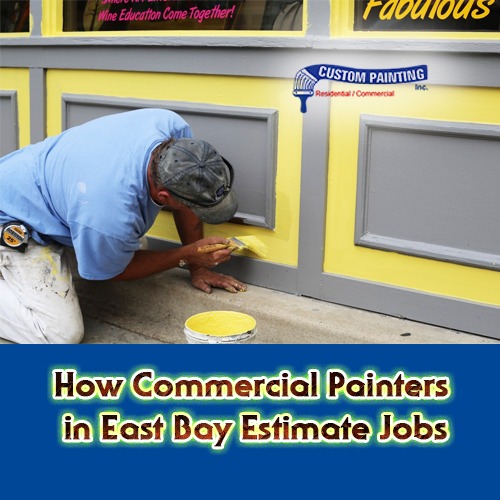For many commercial painters in East Bay and elsewhere, a complete and accurate cost estimate is one of the factors of successful bidding. Cost is the biggest concern for a lot of clients. They want nothing less than a contractor who would match their price just right, and that won’t add unnecessary “hidden” charges that would put an additional burden on their business pocket.
On the part of the contractors, naturally, they want to make money by getting the job. When they provide a low estimate, they won’t be able to make money; and when they give an estimate that’s too high, they won’t get the job. If a contractor has finished a lot of jobs virtue of their low pricing, you would be tempted to get that contractor. But believe us, this is not going to work in your favor and would even put you (and your business property) at risk.
As a customer, you want a quality paint job with a fair price to match. For the contractors, they couldn’t just compromise with the price in order to get the job, or else their business would go down the drain in the process.
Contrary to popular notion, the process of estimating a job is actually pretty easy. But in order to be competitive, they should not cheat on it — that’s unethical and as a result, they won’t be able to attract a lot of customers.
While painting companies have their own guidelines for estimating paint costs, they generally do the following (using interior painting as an example):
1. Measure the size of the space
First of all, estimators should come to your property armed with their own complete equipment — they should not borrow anything from you like a step ladder or a tape measurement. Otherwise, see this as a red flag.
Estimators determine a room’s total square footage by multiplying the height and width of each wall, then adding the resulting product together. Not everything in the room can be painted, such as doors and windows, so estimators subtract them from the total square footage.
For example, suppose your room has 700 square foot space, but it has one door and two windows. Let’s say a door measures 20 square feet and the window has 15 square feet. Subtract 20 square feet (one door) and 30 square feet (two windows) from the 700 square feet = 650 square feet.
Naturally, the bigger the space is, the longer it will take for the estimators to measure the entirety of the room or building being painted.
2. Determine how much paint would be needed
The size of the area is the most important factor in determining the cost of the paint. Usually, a gallon of paint covers 250 square feet. Taking the example from #1, a 650-square foot room will need about two and a half gallons of paint (650 sq. ft. / 250 sq. ft. = 2.6 gallons). It’s fine if there is an excess of it, as the remaining amount will be useful for touchups.
But if you want two coats of paint, you will need about six gallons of paint to cover a 650-square foot room. If the surface is textured, more gallons of paint would be required.
3. Figure out how the cost of paint and the materials
Depending on the brand, color, or quality, a gallon of paint has the price range of $20 and $50. Suppose you want two coats of a good quality paint, then you’ll have to pay $240 (6 gallons x $40) or $300 (6 gallons x $50).
Painters may want to add materials such as brushes, rollers, paint trays, painter’s tape, drop cloths, and other items necessary for the job. They should be durable and of good quality, but of course good quality also comes with a higher price.
For instance, if certain materials cost the following:
Painter’s tape – $15
Paint tray – $15
Caulking – $10
Primer – $20
Drop cloths – $20
A set of brushes – $30
A set of rollers – $30
They would cost $140 in total, which would be included in the estimate.
4. Figure out the labor cost
Painting companies know it’s important to determine how much to pay the workers. If there is other work such washing, prepping, caulking, repairing, and priming the surface, those will also add up to the total labor cost. A full day worth of work would cost from $500 to $600, depending upon the size of the team.
In this case, one or two painters could work cover 2,500 square feet of space in a couple of days. Divide 650 square feet by 2,500 square feet = about 0.25. So, it means you’ll have to pay the workers a quarter of a full workday = around $200.
5. Figure out the total cost
The calculation of the total cost would be using the examples above:
Cost of the paints + cost of the materials + labor cost = total cost.
Add $300 worth of six gallons of paints + $140 worth of materials + $200 in labor expenses = $640. That will be the rough estimate of your painting job.
Of course, the larger the area to be painted, the cost estimates would increase. If the area has lots of trim, baseboards, and other architectural details that will also be painted, the cost estimates would also increase.
If you want a more accurate estimate, you should also include other things like fuel and insurance in addition to the abovementioned costs. Commercial painters in East Bay and elsewhere would also factor in other things such as the intricacy of the details to be painted, the difficulty level of prepping, using more than one paint color, and safety requirements. So, if any of these are included when they are about to paint your property, expect the estimate costs to increase as well.

